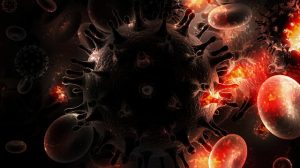NEW YORK (Reuters Health) – A gene therapy protocol developed by scientists in Australia and the US for treatment of HIV-1 infection suppressed viral load and increased CD4 cell count during a phase II study.
This study “shows the potential of the gene therapy approach for the treatment of HIV-1 and represents a major advance in the field,” the research team concludes.
They describe the protocol in Nature Medicine posted online on February 15. The strategy involves transduction of autologous CD34+ hematopoietic progenitor cells with OZ1, “a replication-incompetent gamma-retroviral vector containing a gene that encodes a ribozyme that targets the overlapping vpr and tat reading frames of HIV-1.”
The trial involved 74 early-stage HIV-1-infected subjects undergoing treatment with HAART. They were randomly assigned to receive OZ1-transduced CD34+ cells (n = 38) or control CD34+ cells (n = 36) at a mean dose of 5 million cells per kg by IV infusion. Antiretroviral treatment was interrupted between weeks 24 and 28 and between weeks 40 and 48.
The per protocol analysis included 32 and 33 subjects in the two groups. The primary end point — a significant difference between groups in viral load at weeks 47 and 48 — was not achieved, Dr. Ronald T. Mitsuyasu, at the University of California-Los Angeles, and his team report.
However, the number of subjects with a plasma viral load of fewer than 10,000 copies/mL was significantly higher at weeks 47 and 48 in the gene therapy group than the control group — 15 of 32 vs. 5 of 33 (p = 0.009).
There were also significant differences for the per-protocol time-weighted area under the curve (TWAUC) for viral load at weeks 40-48 and weeks 40-11359, and for the number of subjects in the lowest quartile of TWAUC at weeks 40-100.
“The CD4+ and CD8+ T lymphocyte count data were consistent with the HIV-1 viral load differences between the treatment groups,” the report adds.
There was no evidence of resistance to OZ1 during the trial, and no OZ1-related adverse events. No deaths, AIDS-defining events, severe infections, or clinically significant cardiovascular, renal or hepatic events occurred in any of the study subjects.
Dr. Mitsuyasu and colleagues conclude that cell-delivered gene therapy for HIV infection “can be developed as a conventional therapeutic product.”
Reference:
Nat Med 2009.




